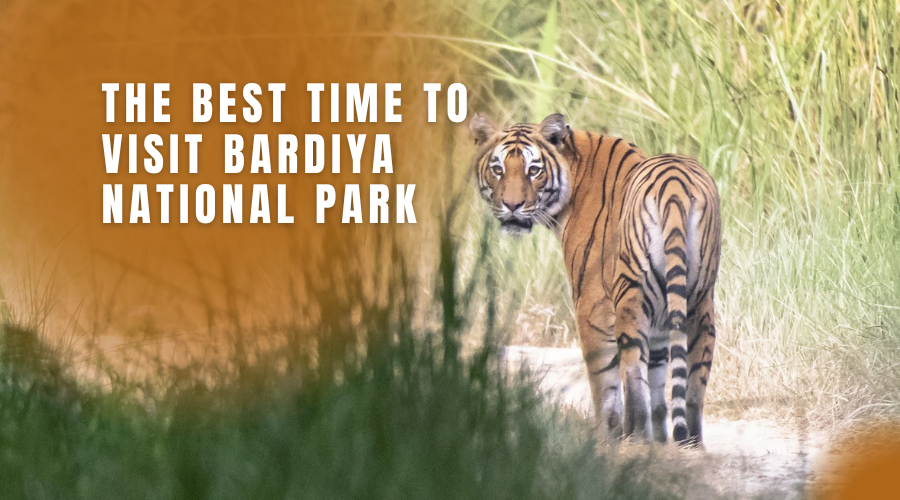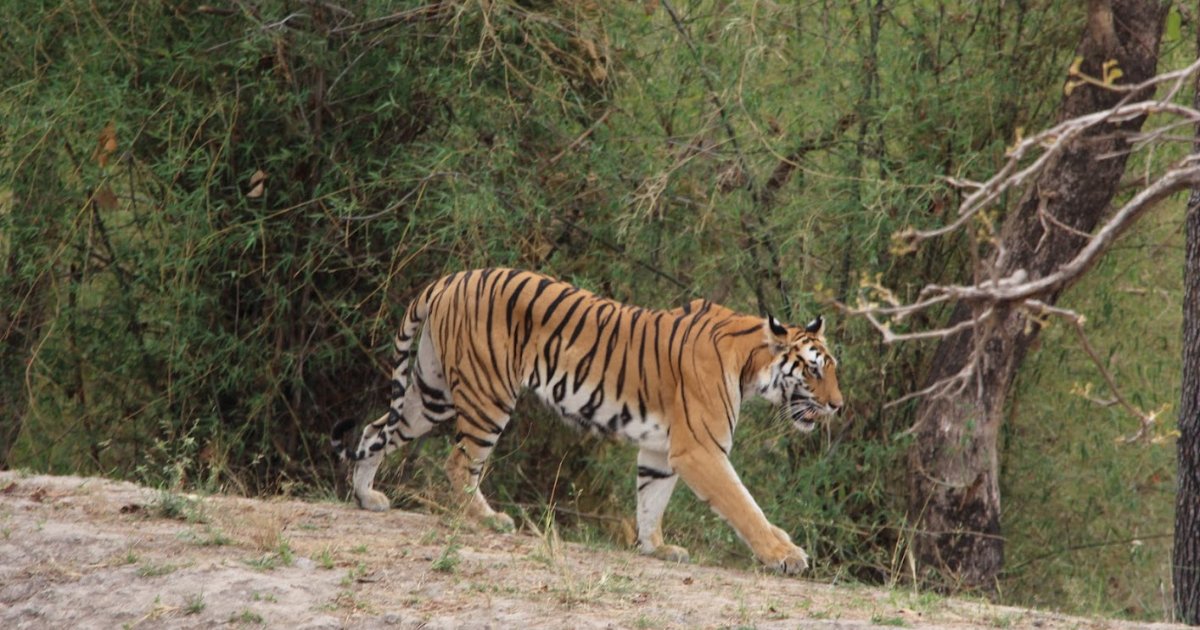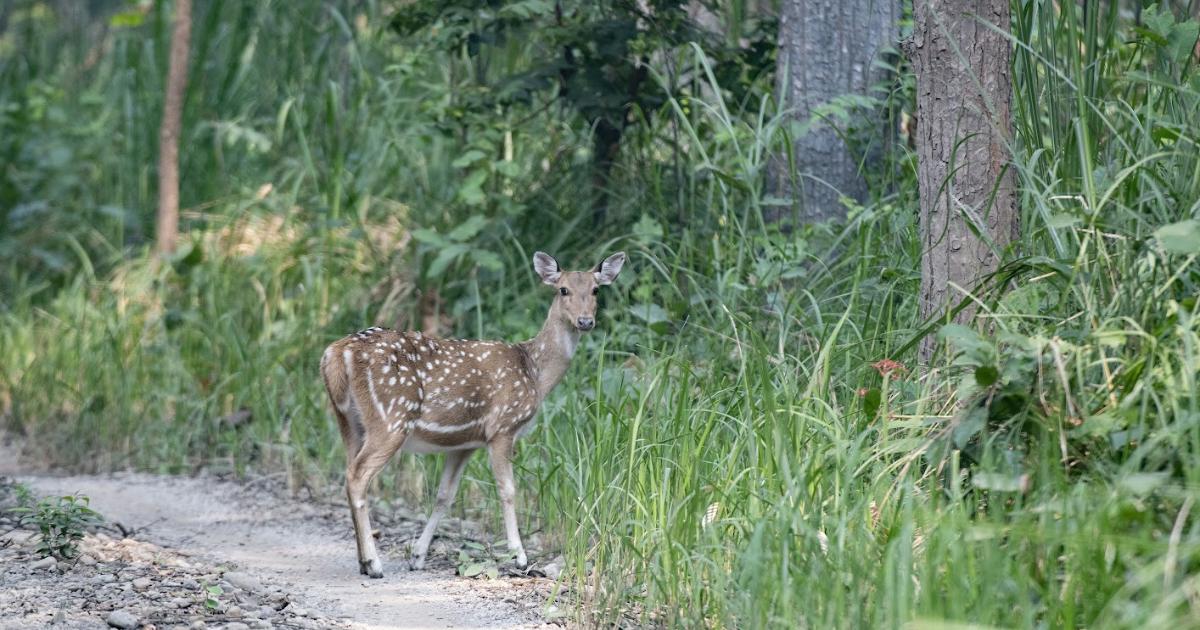
When to Explore Bardiya National Park: The Best Time to Visit

When to Explore Bardiya National Park: The Best Time to Visit
swotah travel
2379
24, 08 2023
Located in the Bardiya district of Nepal, the Bardiya National Park is the largest national park in the Terai region. It was established to protect the rare tiger species along with their prey. But later, in 1984, its area was extended, and it was given the National park status. Different species of vivid animals, like one-horned rhinos, were brought with a motive to protect them. Bardiya National Park now covers a total area of 968 sq km. It shelters animals like the royal Bengal tiger, one-horned rhino, wild elephant, swamp deer, black buck, etc. Bardiya National Park protects 30 plus different mammals, 230 plus bird species, and exotic reptiles like snakes, lizards, etc.
The trip to Bardiya National Park is one hell of an adventurous experience that lets you indulge in bird watching, wildlife sightseeing, elephant tracking, seeing dolphins, jungle safari, etc. It is one of the best ways to get to know the rare and endangered wild species and plants from as close as you possibly can. Since the main goal behind most of the national park’s visits is animal watching, the best time to pay a visit is dry and warm seasons as there is a higher probability of animals getting out of their shelter due to heat. Therefore, starting from February till June/July is the best timeline, especially for tiger sightseeing.
What to expect in each season at Bardiya National Park?
The government of Nepal does not have any time period in a year when the visit to the Bardiya National Park is restricted. One can choose any time of the year that feels comfortable to them. But since this tour prominently focuses on animal watching, the dry and warmer periods are better options than the cold, damp ones. Therefore, spring (March, April, and May), Autumn (September, October, and November), and early winter months are the best.
Spring season
The spring month is the most favorable time for Nepal’s visits, and Bardiya National Park is no exception to it. March welcomes spring in Nepal with the budding of new plants, and by April, every plant gets blooming, birds start singing along, and the wild species start getting out of their den. May and April have the same beauty in the air there is just a slight temperature difference.
The maximum temperature of the Spring season in Bardiya National Park is around 38 degrees Celsius / 100.4 degrees Fahrenheit, and the minimum is around 30 degrees Celsius / 86 degrees Fahrenheit; hence the average temperature is somewhere between 27 degrees Celsius / 80.6 degrees Fahrenheit. April and May do experience occasional rainfall, but it doesn’t create any issues. Since the temperature gets so hot, animals are seen roaming around the riverside.
The cons of visiting Bardiya National Park in spring are:
-
The crowd as spring is the peak season
-
The boiling temperature.

Photo: Stunning Royal Bengal Tiger caught on camera in Bardiya National Park.
Summer season
The summer arrives in June, bringing with it the rain. The summer season is the monsoon of Nepal. The continuous downpour is the remarkable character of June, July, and August ( months of the summer season ). You won’t even have any signs, the sun could be scorching, and rainfall could start right at that moment. With that being said, you might have guessed Summe is not the best pick for the Bardiya National Park adventurous ride. Paths get muddy, and the possibility of landslides and flood increase. Yes, the temperature is excellent with the rain and the forests and flowers look more vibrant, but what is the point when animals won’t be in your sight? As the rain gets heavier, it is apparent that animals do not prefer roaming around and will shelter from the rain.
Last but not least, the Summer season means leeches. While walking through wet, swampy forests, expect lots of leeches on you. Temperature maximum is approximately 32 degrees Celsius / 89.6 degrees Fahrenheit, and the minimum is approximately 22 degrees Celsius/ 71.6 degrees Fahrenheit, so, on average, the temperature is about 24 degrees Celsius / 75.2 degrees Fahrenheit.
If you do plan your Bardiya National Park exploration during the summer/ monsoon season, then carry waterproof clothes, boots, raincoats, and umbrellas. Never forget to check the road conditions prior and check the weather every now and then to avoid being caught in heavy rainfall.
Autumn/fall season
Autumn is the perfect pick for the Bardiya National Park visit. The con of the spring season is the extremely hot temperature, which decreases in the Autumn season. Both days and nights are cooler and pleasant. The moths of September, October, and November comprise the autumn. Not only is this season better in terms of temperature, but it is equally, if not more visually satisfying than spring and summer. The temperature range of the national park is moderate therefore, animals stroll around freely, enjoying nature just like us humans. You can see deer, rhinos, elephants, cheetahs, crocodiles, snakes, etc. Among the months of this season, only early September gets mild rainfall that does not do much harm. It is the perfect time for jungle safari, boating, and elephant sightseeing.
The maximum temperature around this time is 30 degrees Celsius / 86 degrees Fahrenheit, and the minimum is 16 degrees Celsius / 60.8 degrees Fahrenheit. On average, the Autumn season’s temperature is 22 degrees / 23 degrees Celsius / 73 degrees Fahrenheit. Another factor that sets the Fall season apart is the festival color. Nepal’s biggest festivals, Dashain and Tihar, are celebrated in September/October. Everybody is deep in the feels of festivals that make Nepal even more beautiful than it already is. Not to forget, this means Fall is idle to learn about Nepal’s festivals and practices. As this season is as blissful as the spring season, it does have the chaos of the spring season. Meaning there is a very heavy flow of both domestic and international tourists.
Winter season
Winter comprises December, January, and February in Nepal. The early days of winter could be okay for the Bardiya tour, but as the winter really starts to kick in, the weather gets very, very dry and severely cold. Therefore, Winter is not the smart pick. But as there are species of Birds that migrate to the national park only during the winter season, like Bengal florican, peafowl, white-rumped vulture, etc., it could be a golden opportunity for the wildlife photographers out there. The next pro of the Bardiya tour around this time is less crowd. Yes, the place is peaceful and good for people who want some alone time.
Other than that, the surrounding is covered with fog and is humid. Hence, even if animals do get out roaming, it is hard to catch their sight from a distance. Days are shorter the sun sets early but rises later than usual. The minimum temperature of the Bardiya National Park during the winter is 2 degrees/ 4 degrees Celsius (35. 6 degrees Fahrenheit / 39.2 degrees Fahrenheit ), and the maximum temperature is around 25 degrees Celsius / 77 degrees Fahrenheit so, to conclude, the average winter temperature is 20 degrees Celsius / 68 degrees Fahrenheit.
Things to do while on your Bardiya trip:
-
Jungle safari
-
Jeep safari
-
Bird watching
-
Wilderness walking
-
Rafting
-
Boating
-
Fishing
-
Exploring elephant breeding center
-
Exploring Crocodile Breeding Center
What are the things that you should do and avoid while on the trip?
-
Since you will be around many wild animals, keep your distance and avoid getting too close to them.
-
Do not do anything that makes animals feel threatened anyway.
-
Never try to hunt the animals inside the Bardiya National Park. They are kept there for protection, so hunting and poaching is a crime.
-
Feeding animals is strictly prohibited.
-
You better be quiet while on safaris so you do not get the attention of hungry wild animals.
-
Do not tease animals around.
-
Make sure you have all the trekking passes and permits required.
-
Follow the principle of responsible trekking and do not damage plants; do not trash the trails.
-
Be well-behaved with everyone around, including your guide and porters.
-
Never overload your porters.
-
Respect the diverse Nepali culture even when it doesn’t feel familiar.

Photo: Adorable Spotted Deer grazing peacefully in Bardiya National Park.
How do you get to the Bardiya National Park?
The main point from where the buses go directly to the national park itself is Thakurdwara. The other most used transit for the bus is Ambassa. Thakurdwara is 80 km far from Nepaljung, whereas Ambassa is 15 km away from Thakurdwara. The classical path is flights from Kathmandu or Pokhara to Nepalgunj airport. From Neplagunj, there are two options: one is to take a jeep, and the other is to take the local transportation (bus).
You can also get a direct bus from Kathmandu to Thakurdwara itself, but they are very irregular, and it will be difficult to pinpoint the exact time to catch the right bus.
The last way is to take a bus from Kathmandu to Pokhara, then take another bus from Pokhara to Tansen, followed by Lumbini and finally, the last bus to either village of Ambassa or Thakudwara. The fastest is the classic path.
Vegetations in Bardiya National Park
Sal (shoreas robusta), Terminalia sps, Buchanania latifolia, Carrya arboria, wooded grasslands ( Saccharum spontaneum, Imperata cylindrica, and Saccharum bengalensis, Bombax ceiba, M. phillippensis, A. cordifolia, Largerstroemia parviflora ), moist riverine forest (Syzigium cumini, Mallotus philippinensis, Ficus glomerata, Calamus tanusim, Karot), etc.
Animals and birds in Bardiya National Park
Royal Bengal tiger, one-horned rhino, swamp deer ( Cervus duvaucelii ), crocodile, gharials (Gavialis gangeticus), spotted deer, hog deer, wild asian elephants, peacock, kingfisher, crested serpent eagle ( kakakul in Nepali ), White browed wagtail (Kole tiktike), himalayan flameblack, etc.
NEWSLETTER SIGNUP
Sign up to receive our trip ideas and travel offers!
Get updates and Exclusive Offers up to 20% Discount








